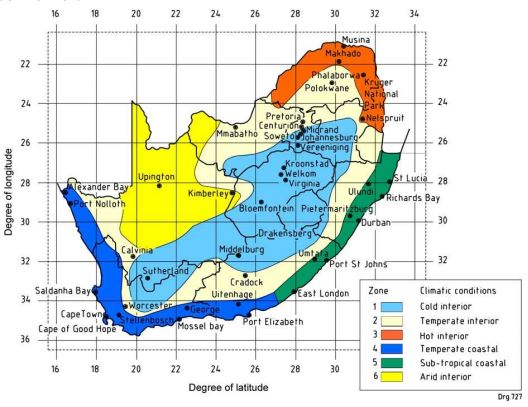The creation of a South African climate map for the quantification of appropriate passive design responses

To design energy-efficient buildings using an optimal combination of passive design strategies it is necessary to understand the particular climate one is designing for. Predictive computational building performance requires a detailed set of quantified climatic data. Bioclimatic charts, such as the Givoni-Milne, have been used in the early design stages to define potential building design strategies. Recently the South African SANS 204-2 (2008) standard introduced six main climatic regions in an attempt to introduce a quantified view of climate into the South African National Building Standards.
The question is raised whether this granularity of refinement is adequate to optimally support design decisions within the built environment for passive design strategies such as passive solar heating, thermal mass and natural ventilation. The CSIR decided to map South Africa using 20 years of precipitation and temperature data employing a Köppen-Geiger climatic classification to refine the six-zone model. The model was then extended to reflect expected South African climate changes over the next 100 years to synthetically create weather files for predicting building performance of existing and new buildings in the future. Using the new climatic map, several bioclimatic design tools were researched to address the question of climatic responsive design. Many pre-design tools have been developed in order to help architects design buildings in the early design stages. These tools include a series of bioclimatic charts by Olgyay, Givoni and Givoni-Milne.


Comments